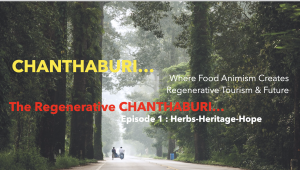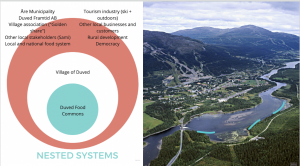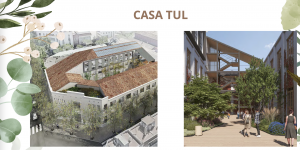
Some of the wonderful projects from 2023
Today was a special day on the Power of Place 2023 journey. A few of the cohorts presented their project work, illustrating just how awesome this learning can be.
We heard from six teams who presented a diverse range of projects around urban and rural community engagement. Three teams had chosen to work on ‘live’ projects, two teams were working on future projects and one team were revisiting a past unfinished project to see if a regenerative lens could provide the much needed revitalisation. The project ‘places’ took us all over Europe from Spain and France, to Sweden and The Netherlands, and across Asia to Thailand.
Each project was able to illustrate the power of working from a place-sourced perspective to bring essence to inquiry and each one expressed living systems principles in its own unique way.
We saw how using different frameworks really helped teams work with the various stages and aspects of their project development and illustrate how systems worked in constant evolving relationship. Everyone commented on how valuable it was to start with nested systems and mapping their story of place, and bio-cultural uniqueness became a way to see what the essence of their place contributed to their project inquiry.

In Chanthaburi we see food ‘essence’ come into focus, reconnecting the pepper and cardamon spices to the food system to become the unifying narrative for an emerging sustainable agriculture and tourism region where the current economy has been increasingly drawn towards industrialised farming. We learn how a story of place engagement has the power to energise local stakeholders.
In Munich we heard about community engagement within a local circular economy. The city has an abundance of ‘green’ spaces but they are all very ‘managed’ like the economic model of the city which fosters efficiency and a pattern of order and control. But it also has a rebel streak: once – albeit briefly and a long while age – it was under communist rule; now nature’s order is allowed to run free in the ‘Tiny Forest’ that has been rewilded. It is these rebellious anomalies that inspired the project leader to focus on ‘relationship before task’, to disrupt stakeholder meetings by creating space for ‘warm data’ sessions before tackling the expected order meeting agendas.
In Houplin-Ancoisne, we saw how ‘living the question’ has been embedded in every spiralling step of their community engagement project and become key to imaging their future state – how connection with water might be the unifier of two communities. The project used the figure of the beaver – a keystone species – as their symbol of regeneration and to represent nature’s place as a project stakeholder, but also as one that could ignite people’s imagination to ‘thinking like a beaver’.
In Duved a small community – that expands seasonally with tourism and second-homers – had been the focus of an abandoned project to test democracy. We learned how a re-examination of a recent project using regenerative frameworks helps to work out why it achieved ‘do more good’ rather than ‘restore’ or ‘regenerate’ life and ultimately where aspects were co-opted by business as usual. It emerges that without a ‘story of place’ and mapping of stakeholder guilds, the original engagement process did not speak to the bio-cultural essence of the place. A regenerative lens enabled them to Vision a Future State and see potential in the Sami villages, the local Village Association and the food system as ‘nodes’ to ‘re-centre abundance and restore life’.

Casa Tul is a building in the industrial zone of Poble Nou Barcelona, an area that was regenerated for the 92’ Olympics. This project began as a retrofit building design for a developer to create a biophilic office/work space. After much mapping of the nested systems, and exploring regenerative stakeholder engagement, the team came to a realisation that Casa Tul itself was not the project. Instead, it was activating the developer to catalyse co-mutual stakeholder engagement.

In Rotterdam’s Delfshaven a story of separation is played out between its attraction as a tourism destination and its areas of perceived impoverishment. But it’s magnetic energy means it is also a place of ethnic diversity and vitality with all the energy flows that you might expect in a port. In this project, tourism becomes the node to heal the story of separation and redefine a new narrative around its bio-cultural uniqueness.
These wonderful collections of exploration and engagement illustrated that regenerative learning occurs most deeply through the collective practice of working on a project. The is where the magic happens. What emerges is a profound wisdom that story-telling is a big part of participatory engagement – and participatory engagement in a ‘story of place’ can become the ‘unifying narrative’ to bring a project to life.
As always there were some big questions that all projects held up in different ways:
How do we to maintain energy and will to keep a project alive?
This was a key question within all the project teams – for whom team engagement ebbed and flowed and sometimes dropped off through the course. And it was cited as illustrative of the reality of stakeholder engagement – the important of building relationship before task – and holding the space for a project to develop.
How do we ensure that developmental capacity is embedded so that our projects are ‘really regenerative,’ continuing to evolve through and with their nested living system without the need of the project initiators?
This short summary cannot fully express everything we learned and all the wonderful questions that were expressed
By Samantha – Thursday 19 October 2023


Recent Comments